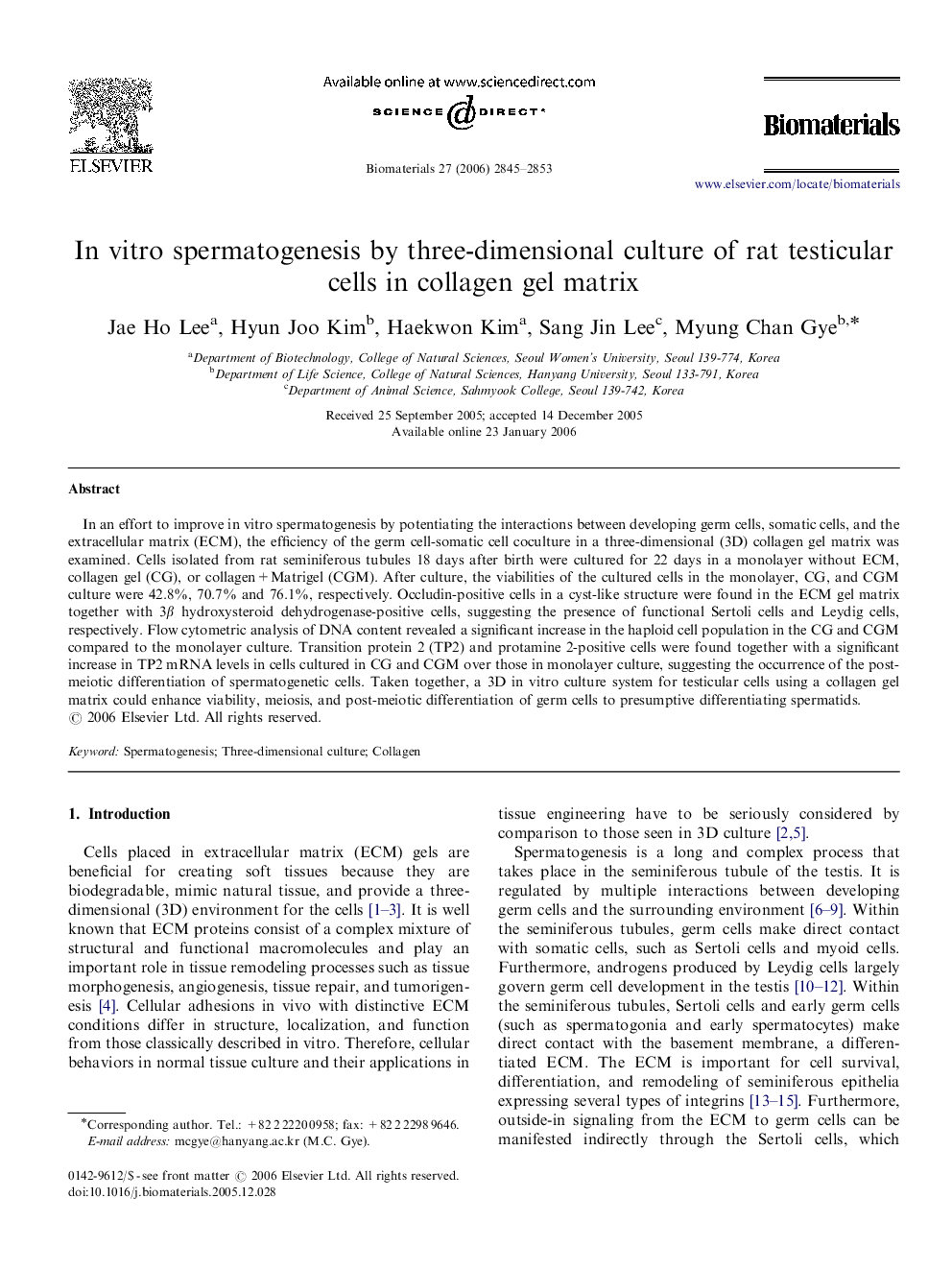| Article ID | Journal | Published Year | Pages | File Type |
|---|---|---|---|---|
| 11448 | Biomaterials | 2006 | 9 Pages |
In an effort to improve in vitro spermatogenesis by potentiating the interactions between developing germ cells, somatic cells, and the extracellular matrix (ECM), the efficiency of the germ cell-somatic cell coculture in a three-dimensional (3D) collagen gel matrix was examined. Cells isolated from rat seminiferous tubules 18 days after birth were cultured for 22 days in a monolayer without ECM, collagen gel (CG), or collagen+Matrigel (CGM). After culture, the viabilities of the cultured cells in the monolayer, CG, and CGM culture were 42.8%, 70.7% and 76.1%, respectively. Occludin-positive cells in a cyst-like structure were found in the ECM gel matrix together with 3β hydroxysteroid dehydrogenase-positive cells, suggesting the presence of functional Sertoli cells and Leydig cells, respectively. Flow cytometric analysis of DNA content revealed a significant increase in the haploid cell population in the CG and CGM compared to the monolayer culture. Transition protein 2 (TP2) and protamine 2-positive cells were found together with a significant increase in TP2 mRNA levels in cells cultured in CG and CGM over those in monolayer culture, suggesting the occurrence of the post-meiotic differentiation of spermatogenetic cells. Taken together, a 3D in vitro culture system for testicular cells using a collagen gel matrix could enhance viability, meiosis, and post-meiotic differentiation of germ cells to presumptive differentiating spermatids.
